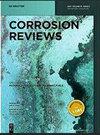基于深度学习的管道漏磁检测图像识别模型
IF 3.2
4区 材料科学
Q3 ELECTROCHEMISTRY
引用次数: 0
摘要
摘要深度学习算法在工程图像识别领域具有广泛的应用和优异的性能。目前,埋地金属管道缺陷的检测和识别仍主要依靠人工,效率低下。为了实现管道漏磁检测图像的智能高效识别,基于漏磁检测的实际需求,本文在深度学习中提出了一种基于YOLOv5和CNN模型的新的目标检测框架。该框架首先使用目标检测对MFL图像中的目标进行分类,然后根据分类结果将包含缺陷的特征输入到基于CNN的回归模型中。该框架集成了目标检测和图像回归模型,实现了MFL伪彩色图的目标分类和金属损失深度的同步识别。结果表明,该模型的目标识别能力良好,精度达到0.96,金属损失深度识别结果的平均绝对误差为1.14。该框架具有更有效的识别能力和适应性,弥补了损伤深度的量化,可用于进一步的监测和维护策略。本文章由计算机程序翻译,如有差异,请以英文原文为准。
Image recognition model of pipeline magnetic flux leakage detection based on deep learning
Abstract Deep learning algorithm has a wide range of applications and excellent performance in the field of engineering image recognition. At present, the detection and recognition of buried metal pipeline defects still mainly rely on manual work, which is inefficient. In order to realize the intelligent and efficient recognition of pipeline magnetic flux leakage (MFL) inspection images, based on the actual demand of MFL inspection, this paper proposes a new object detection framework based on YOLOv5 and CNN models in deep learning. The framework first uses object detection to classify the targets in MFL images and then inputs the features containing defects into a regression model based on CNN according to the classification results. The framework integrates object detection and image regression model to realize the target classification of MFL pseudo color map and the synchronous recognition of metal loss depth. The results show that the target recognition ability of the model is good, its precision reaches 0.96, and the mean absolute error of the metal loss depth recognition result is 1.14. The framework has more efficient identification ability and adaptability and makes up for the quantification of damage depth, which can be used for further monitoring and maintenance strategies.
求助全文
通过发布文献求助,成功后即可免费获取论文全文。
去求助
来源期刊

Corrosion Reviews
工程技术-材料科学:膜
CiteScore
5.20
自引率
3.10%
发文量
44
审稿时长
4.5 months
期刊介绍:
Corrosion Reviews is an international bimonthly journal devoted to critical reviews and, to a lesser extent, outstanding original articles that are key to advancing the understanding and application of corrosion science and engineering in the service of society. Papers may be of a theoretical, experimental or practical nature, provided that they make a significant contribution to knowledge in the field.
 求助内容:
求助内容: 应助结果提醒方式:
应助结果提醒方式:


